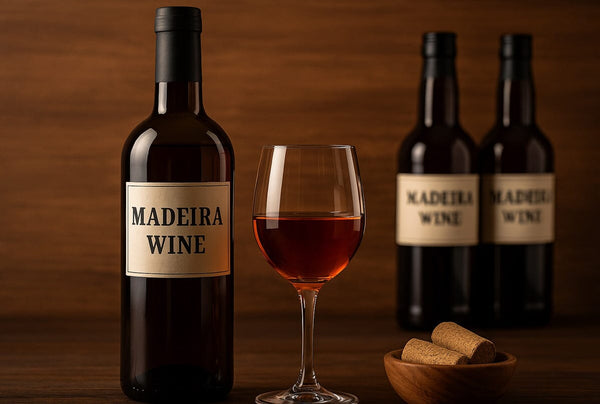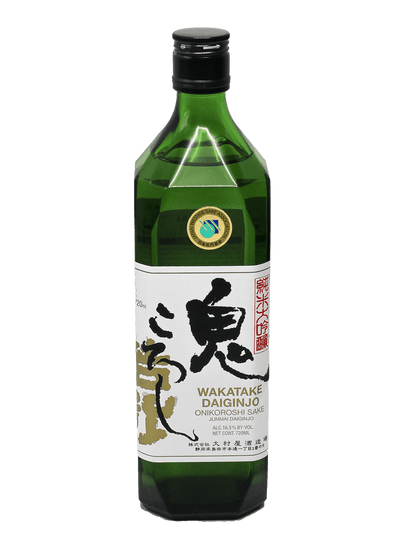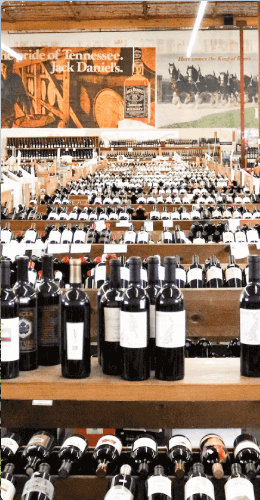A Complete Introduction to Madeira Wine

Madeira wine is one of the world’s most storied yet misunderstood fortified wines. Originating from the Portuguese Madeira Islands in the Atlantic Ocean, this unique wine has captivated drinkers for centuries with its rich history, complex flavors, and remarkable aging process. Whether sipped on its own or used to elevate a recipe, Madeira wine offers a taste experience like no other.
Interestingly, it’s also known as football star Cristiano Ronaldo’s favorite wine — fitting, given it shares roots with his homeland. In this guide, we’ll explore what makes Madeira wine so special, from its origins and types to pricing and where to buy it.
What is Madeira Wine?
It is a fortified wine that must come from the Madeira Islands of Portugal, in the middle of the Atlantic Ocean. These wines range in flavor and age and are renowned both as a delicious drink and as a key ingredient in Portuguese cuisine.
The History and Origins of Madeira Wine
The production of Madeira wine dates back 500 years, with the first vineyards introduced by the English during colonization of the uninhabited islands.
The wine’s unique character is defined, in part, by the island’s rich volcanic soil, favorable climate, and the grape varieties brought from different parts of the world. One of the first was Malvasia Cândida, which originated in 13th-century Venice. The Italian state dominated the Mediterranean trade. By the 15th century, Malvasia was cultivated on Madeira alongside other varieties that soon became highly productive.
A Unique Aging Process That Defines Madeira Wine
The unique aging process of Madeira wine was discovered by chance: the harsh conditions of long sea voyages, exposure to ocean breezes, and particularly the heat aboard ships traveling through the tropics altered the wine, giving it greater body and complexity.
Records show that by the 16th century, Madeira wine was fortified with up to 20% alcohol to withstand the conditions of long-distance shipping. The constant motion of the sailing ships and the intense heat of the equatorial crossing, akin to a sauna, accelerated its maturation. In fact, these long voyages became a standard practice that defined the wine’s unique characteristics. In 1794, technical methods were introduced to replicate the process of this heated maturation on land.
The Modern Landscape of Madeira Wine Production
Today, the island has about 2,500 hectares of vineyards producing Madeira wines that are renowned worldwide. It is a true vinous treasure. A travel writer recently wrote of the island: “Madeira is one of the most beautiful islands I’ve ever been to. It’s definitely the most exotic island in Europe, perhaps reflecting its location a not-insignificant distance away from Europe, in the Atlantic Ocean. Madeira is volcanic, green, and rugged.”
The lands surrounding Câmara de Lobos form the island’s primary wine-growing region. This landscape is unique, with rugged and steep terrain. The volcanic soil and the influence of the sea give the wine its exceptional qualities. Numerous relatively small vineyards are planted in terraced formations along the steep mountainsides.
Types of Madeira Wine: Grapes and Production Methods
Madeira wines owe their remarkable characteristics to a method known as estufagem, or artificial heating. This technique involves warming the wine, achieving two key effects: it enhances preservation, allowing the wine to age gracefully, and caramelizes the sugars in the must, imparting a distinctive toasted aroma.
Main Grape Varieties Used in Madeira Wine
Today, Madeira wine is primarily produced from four grape varieties:
Each contributes distinct characteristics to the final wine, ranging from dry and light to sweet and complex. Once harvested, the grapes are pressed and fermented. As with port, the resulting wine must experience fortification with brandy, halting fermentation and preserving a relatively high sugar level.
Aging and Style Classification
The wine is then aged in oak barrels for varying periods, from a few years to over a century. During this process, Madeira wine develops its unique flavors and aromas, making it an unparalleled elixir. The different styles of Madeira are classified according to their sweetness and character, ranging from dry with Sercial and Verdelho to sweet with the Bual and Malvasia varieties.
Cooking With Madeira Wine
If you know anything about cooking with wine, you know that Madeira wine for cooking pairs perfectly with all kinds of ingredients. It is used in many ways similar to sherry, adding flavor and depth to everything from creamy sauces to soups, stews, and desserts.
When cooking with Madeira, it is important to follow the recipe precisely; due to its strong character, too much or too little can significantly impact the final result.
Madeira Wine and Its Connection to the United States
The relationship between Madeira wine and the United States dates back to the nation’s earliest days. In the 18th century, Madeira became a highly popular drink in the American colonies. The country’s founders and leaders, including George Washington and Thomas Jefferson, were avid enthusiasts of Madeira wine.
Indeed, Madeira was the wine of choice for toasting at the signing of the Declaration of Independence in 1776 and George Washington’s presidential inauguration in 1789.
Its popularity in the United States was due to its durability and stability; after the long sea voyages, Madeira could stand extended storage in colonial warehouses.
Madeira Wine Price Guide
The Madeira wine price can vary substantially depending on the wine’s quality, age, and producer. One can pick up
-
Entry-Level Cooking Madeira: $10–$20
-
Mid-Tier Madeira Bottles (e.g., 5–10 years): $30–$60
- Premium Aged Madeira Wines (e.g., single harvest or vintage): $100+
For Example:
-
Blandy's Rainwater Medium Dry Madeira: under $15 a bottle
-
2001 Henriques & Henriques Sercial Single Harvest Madeira: $100.
- Rare Wine Co. Charleston Sercial Special Reserve Madeira (accolade-winning): Bottle Barn offers for just a little over $50.
Where to Buy Madeira Wine
Wondering where to buy Madeira wine or find Madeira wine nearby?
You can explore local wine retailers or trusted online stores like Bottle Barn, which offers a hand-curated selection from producers such as Blandy’s, Henriques & Henriques, and Saveiro.
Whether you're shopping in-store or online, always look for trusted labels and consider the age/style that fits your preferences.
Final Thoughts: Why Madeira Wine Deserves a Place in Your Collection
Few wines in the world offer what Madeira wine does — a remarkable combination of heritage, resilience, and versatility. Born from volcanic soil and centuries of innovation, this fortified wine is more than just a drink; it’s a story in a bottle.
Whether you're discovering it for the first time, revisiting an old favorite, or reaching for it in the kitchen, Madeira wine adds character and depth in every context. Its legendary aging process, wide range of styles, and culinary flexibility make it a must-have for wine lovers, home chefs, and history buffs alike.
Ready to taste Madeira?
Explore our curated selection and buy Madeira wine online from trusted producers — or search for Madeira wine nearby to support a local shop. However you enjoy it, you’re raising a glass to centuries of craftsmanship.


















Leave a comment